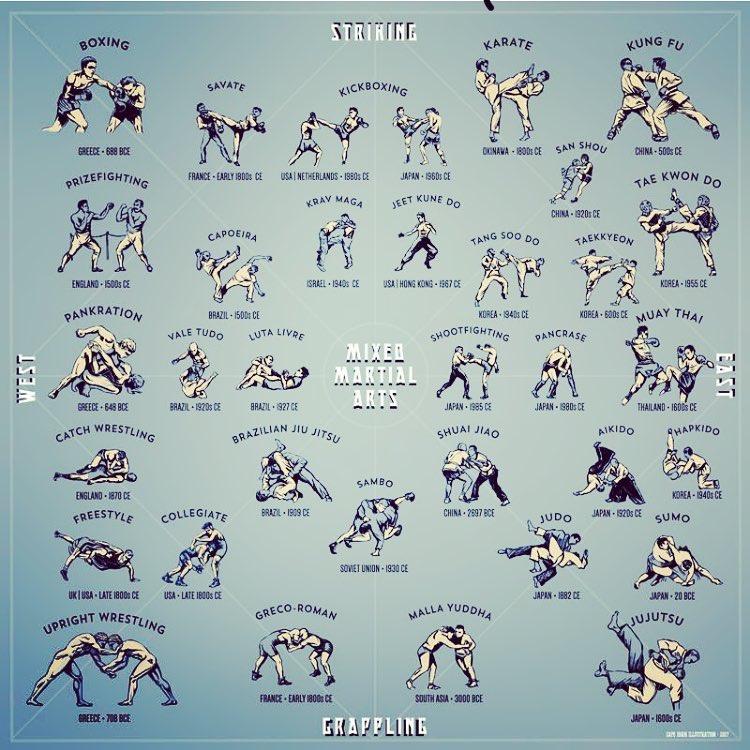The History And Philosophy Of Fighting Style: A Deep Dive
The History And Philosophy Of Fighting Style: A Deep Dive
Blog Article
Writer-Moesgaard Henson
Enter the ancient world where martial arts were substantiated of necessity in diverse areas. visit the following internet site combating styles intertwined with historic contexts. Techniques progressed over centuries with committed practice and cultural exchanges. Today, modern martial arts mix standard elements for optimal efficiency. Philosophically, martial arts emphasize technique, self-improvement, and harmony. Regard, humility, and balance are foundational principles directing specialists towards growth and resilience. Check out the depths of this rich background and ideology to reveal the extensive influences shaping this long-lasting discipline.
Beginnings of Fighting Style
Fighting style came from various areas all over the world, progressing as sensible fight systems to resist risks. These old fighting designs were developed out of necessity, with each culture crafting methods suited to their special atmospheres and obstacles. From martial arts and autism grappling arts of Jujutsu in Japan to the striking strategies of Martial art in China, martial arts were deeply intertwined with the historical, social, and social textile of their corresponding societies.
In Japan, the samurai class polished martial arts like Kenjutsu, the art of the sword, which later on evolved into the extra popularized kind of Kendo. On the other hand, in Brazil, Capoeira emerged as a mix of dance and fight, developed by enslaved Africans as a means to resist injustice. Each martial art lugs with it an abundant history and philosophy, reflecting the values and beliefs of individuals who exercised them.
As you explore the beginnings of martial arts, you reveal a tapestry of human ingenuity, durability, and the unrelenting spirit of warriors throughout time.
Advancement of Strategies
Through centuries of technique and refinement, combat methods within different martial arts have undertaken a profound advancement. From old designs like Kung Fu and Karate to a lot more contemporary disciplines such as Brazilian Jiu-Jitsu and Krav Maga, the advancement of strategies has actually been driven by a combination of social impacts, useful applications, and technical developments.
One considerable facet of this development is the cross-pollination of methods between various martial arts. As an example, strategies from traditional Japanese Jiu-Jitsu were integrated into the creation of Judo by Jigoro Kano in the late 19th century. This blending of styles has resulted in the advancement of hybrid martial arts like Mixed Martial Arts (MIXED MARTIAL ARTS), which combine elements of striking, grappling, and entry methods.
Additionally, the evolution of techniques has been shaped by the increasing focus on efficiency and efficiency in battle. white martial arts actor have continuously looked for to improve their techniques via extensive training, trial and error, and competitors, resulting in the development of extremely specialized and reliable combating styles. Generally, the development of strategies in martial arts shows the vibrant nature of combat and the ongoing pursuit for improvement and advancement.
Philosophical Foundations
Checking out the underlying thoughtful concepts of martial arts provides insight into their core worths and guiding beliefs. At the heart of numerous martial arts self-controls is the concept of discipline itself. By training your mind and body to work as one natural system, you grow discipline that prolongs past the dojo or health club right into daily life. This self-control includes regard, humility, and self-discipline, forming not just your physical capacities but additionally your character.
Another basic thoughtful foundation in martial arts is the idea of constant self-improvement. where is martial arts most popular of understanding a fighting style is continuous, with professionals constantly aiming to much better themselves, both literally and emotionally. This focus on growth fosters strength, willpower, and a development frame of mind that can be related to all aspects of life.
In addition, martial arts emphasize the relevance of harmony and equilibrium. Strategies are created to make use of an opponent's energy versus them, highlighting the concept of yielding and rerouting force instead of satisfying it head-on. This approach includes social connections, promoting calm resolutions and good understanding. By accepting these thoughtful structures, martial musicians not only boost their battle abilities but likewise grow a way of living fixated individual growth, regard, and consistency.
Conclusion
Finally, the background and ideology of martial arts provide a rich tapestry of custom, self-control, and self-improvement.
Take for example the story of Bruce Lee, that transformed martial arts by mixing various styles and ideologies to develop his very own special form of Jeet Kune Do.
Through commitment and innovation, martial artists remain to press limits and influence others to reach their full potential both in fight and in life.
